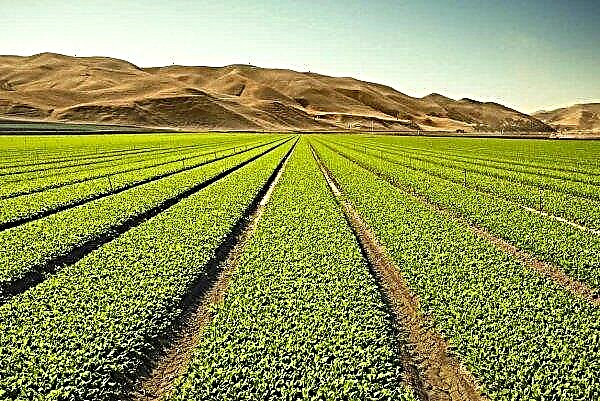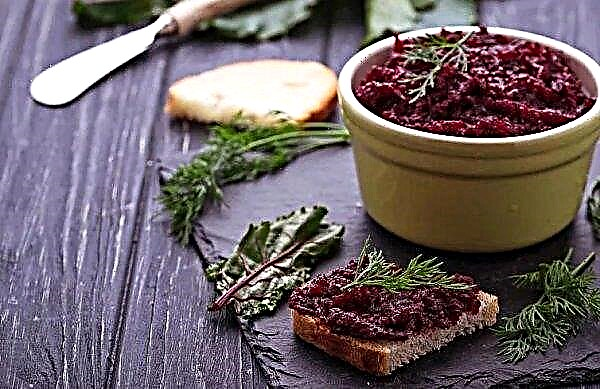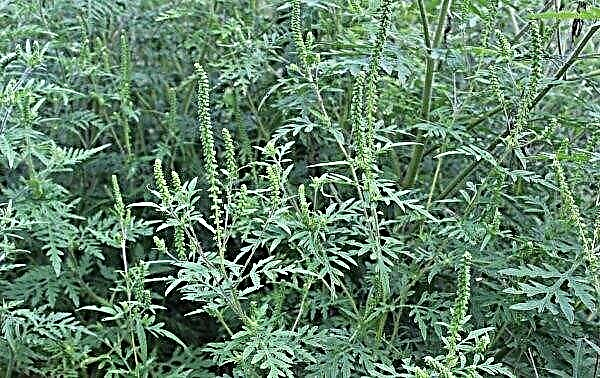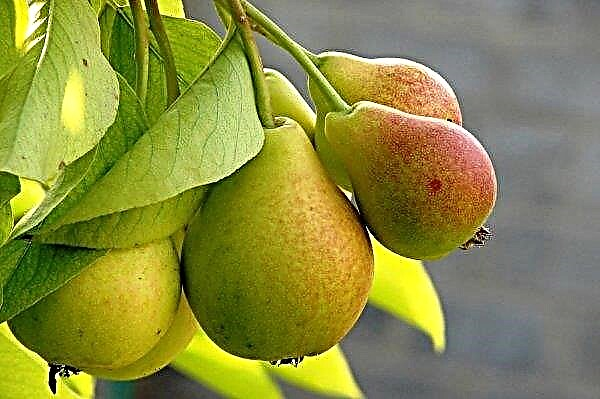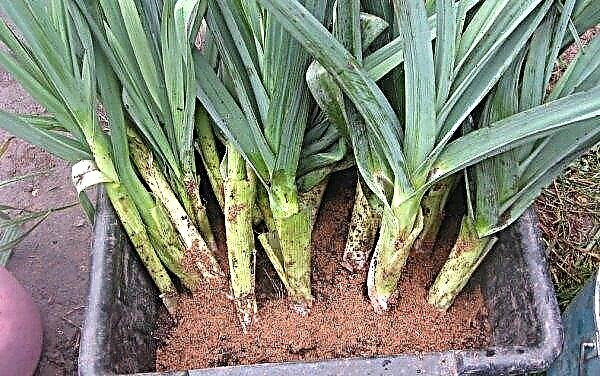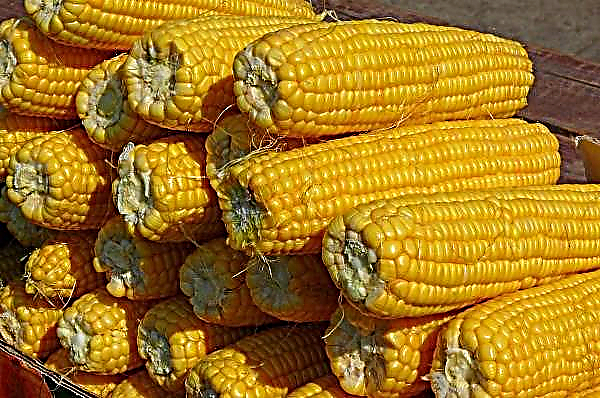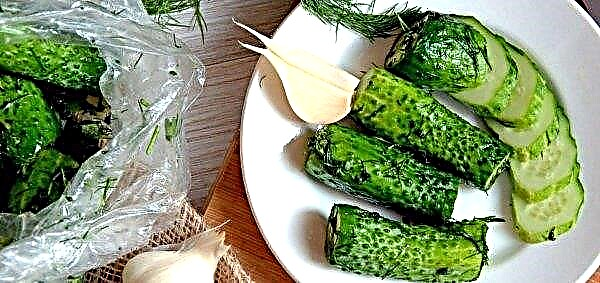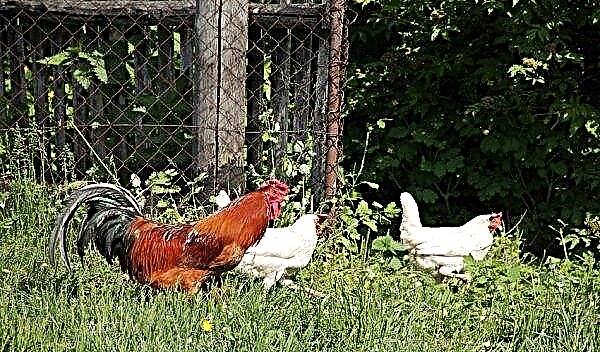Yalta onion is known in the post-Soviet space as one of the most delicious varieties. The variety has very unusual characteristics, so the popularity of this vegetable is quite justified. Read more about the characteristics of the variety and the rules for growing the culture in the article.
Description and characteristics of the onion variety Yalta
Yalta onions, also known as Crimean onions, are grown mainly in the territory of Big Yalta. The variety has a remarkable appearance and taste, which differs from other varieties.
Did you know? Yalta onion was bred in the 50s of the XX century in the Nikitsky Botanical Garden from Portuguese and Spanish purple varieties.
What it looks like, ripening dates and yield
Yalta bulbs grow round-flat. The weight of one turnip is 150-300 g. The coating layer is purple with a red tint. The inner scales are white with a pale pink inside. The taste of vegetable culture is juicy, sweetish.
Feathers are large, dark green. There is a wax coating on the leaves. The growing season of the Yalta onion lasts 140–160 days. Productivity from 1 hectare of plantings is 80 tons.
Useful properties and possible contraindications
- The variety has gained popularity due to its useful properties, namely:
- strengthens the immune system;
- effectively removes helminths from the body;
- stops inflammatory processes;
- considered a prophylactic of oncological diseases;
- lowers blood cholesterol;
- improves skin and hair condition;
- stimulates the production of gastric juice.
Among the contraindications is an allergic reaction to components in the chemical composition of the vegetable. Also, it is undesirable to use the product with high acidity, gastritis and ulcerative lesions of the gastrointestinal tract.
Features of planting onion varieties Yalta
Onions Yalta is grown not from the bulb, but from the seeds by the seedling method. Initially, seedlings are grown from seeds. Then the seedlings are moved to a permanent place. When planting this variety, one should not only consider the optimal timing and choose a site, but also follow the correct technology.

Landing dates and preparatory work before landing
Yalta onions are sown for seedlings in the period - the end of February and the beginning of March. Fortified seedlings are transferred to a permanent place of growth in the first half of April.
Seat selection
For landing, choose an open and sunlit area. Also, it is necessary to take a responsible approach to the choice of soil. In natural conditions, in the Crimea, spicy culture grows on Tauride schists.
This type of soil warms up well during the day, which provides plants with the necessary conditions for growth. To grow Yalta onions in the middle lane, the ridge for planting must be well fertilized. In the fall, six months before transplanting, the site is dug up, rid of weeds and leveled.
Predecessors
When choosing a location for a future location of a vegetable crop, it is important to consider crop rotation.
- It is optimal to plant a crop on a site where previously grown:
- greenery;
- White cabbage;
- Tomatoes
- potatoes.
In the same place where any kind of onion grew before, planting is not worth it.

Seed preparation
Before sowing, planting material must be decontaminated. For this, it is soaked in a 1% solution of potassium permanganate for 35–40 minutes. For better germination, gardeners are advised to additionally treat the seeds with growth stimulants. The technology of soaking in stimulants depends on the chosen drug and is described in the instructions for the tool.
Did you know? Scientists came to the conclusion that the chemical compounds of sulfur (S), which are part of onions, prevent the occurrence of cancer.
Landing technology
Agricultural technology for growing onion seedlings consists of the following steps:
- To grow seedlings, prepare containers with a depth of about 15 cm. As a substrate, a mixture of humus and soddy soil, in a 1: 1 ratio, is suitable. For fertility, it is necessary to add 50 g of complex mineral fertilizers to the soil mixture.
- Make furrows in containers with a depth of 0.5–1 cm at a distance of 5.5–6 cm from each other. Distribute the seeds along the furrows, sprinkle them with soil mixture and water.
- Before the first shoots appear, keep the crops in conditions of +18 ... + 20 ° С. After germination of the first shoots, lower the temperature to + 12 ° C. After a week, again increase the temperature level to +16 ... + 18 ° С.
- During the period of seedling growth, daily moisten the soil by spraying the plantings from the spray gun.
- 1–1.5 weeks before planting the onions in a permanent place, begin to take the plants outside for hardening. On the first day, keep the seedlings on the street for about an hour. Increase the hardening time daily.
 When the bulbs form 3-4 feathers, seedlings can be planted in a permanent place.
When the bulbs form 3-4 feathers, seedlings can be planted in a permanent place.
The landing technology is as follows:
- Mark the grooves at a distance of 0.4 m from each other.
- Dig small holes in the rows, keeping a distance of 10 cm between them.
- Place the onions in the wells.
- Bury the plants so that only the green part remains above the ground.

Onion Care Features
Care for the Yalta onion consists of watering, cultivating, weeding, and feeding.
Watering, loosening the soil and weeding
The soil is irrigated as necessary. The beds should always be moist. For irrigation, use settled water with a temperature of +20 ... + 22 ° С. The last hydration is carried out 3 weeks before harvest. To add water to the beds follows the row spacing irrigation method.
After each watering, the soil must be loosened. If this is not done on a regular basis, a crust forms on the surface of the soil. In this case, it will be difficult for the root system to be saturated with oxygen. Weeding is carried out as the weeds grow. Weeding beds conveniently in the process of loosening the substrate.

Feeding
Fertilizers are applied every 10 days from the moment of planting until the last days of July.
As dressings alternate:
- chicken droppings diluted in water in proportions of 1:10;
- potassium phosphorus fertilizer solution, prepared on the basis of the proportion: 20 g of superphosphate and 10 g of potassium chloride in 5 l of water.
Important! When feeding plants, do not exceed recommended amounts of nutrients. Excess fertilizers only harm the crop.
Plant pests and diseases
The variety is resistant to most diseases and pests.. With excessive moisture, the development of fungal diseases, in particular, peronosporosis, is likely. For treatment using Bordeaux fluid, drugs "Ridomil" or "Arceride" (according to the instructions).

To prevent fungal diseases, the stands are treated according to the schedule:
- after rooting seedlings - 1% solution of Bordeaux mixture;
- 2-3 weeks after the first treatment - the drug "Arceride" in a concentration of 0.4%;
- 20 days after the second treatment - repeated spraying with "Arceride".
Harvesting and storage
Bulbs fully ripen in early September. The turnip does not tolerate transportation and is not stored for a long time. It is better to eat vegetables in the first few weeks after harvesting. In order for the bulbs to lie as long as possible, they should be stored at a temperature of + 15 ° C and humidity not more than 50%.
In the classic form, Yalta onion is found only in the Crimea, but in other regions it can also be grown. To get a delicious crop, follow the above guidelines for planting and caring for the variety. When fulfilling the agrotechnical rules, the work of the vegetable grower will certainly succeed.Important! The variety is classified as salad, so the spicy vegetable is not thermally processed. When exposed to high temperatures, the beneficial properties of onions are reduced.

